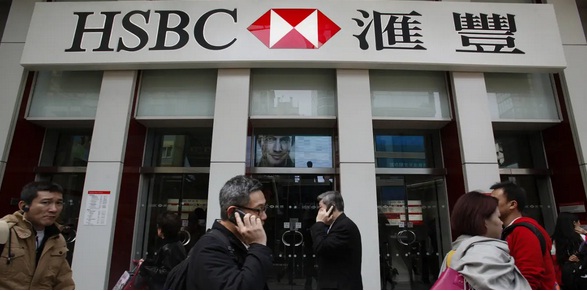For six months, profit before tax fell by $5.7bn to $15.8bn, driven by $2.1bn in dilution and impairment losses

LONDON: HSBC Holdings plc reported a sharp year-on-year decline in interim profits, weighed down by notable one-offs and macroeconomic pressures, yet the bank maintained strategic execution across its core businesses, underscoring operational resilience in turbulent markets.
Group CEO Georges Elhedery struck a cautiously optimistic tone: “We’re making positive progress in becoming a more agile, focused organisation built on our core strengths… each of our four businesses sustained momentum in earnings with each growing revenue.”
First-Half Financials Reflect Strategic Adjustments
For the six months ended 30 June 2025, profit before tax fell by $5.7bn to $15.8bn, driven by $2.1bn in dilution and impairment losses tied to HSBC’s associate BoCom and the absence of $3.6bn in prior-year disposal gains from its Canada and Argentina operations. On a constant currency basis and excluding notable items, profit before tax rose $0.9bn to $18.9bn—led by Wealth, Premier Banking, and heightened market volatility favouring HSBC’s Foreign Exchange and Capital Markets desks.
Revenue declined 9% to $34.1bn due to absent disposal-related income, but underlying momentum remained firm. Excluding notable items, revenue rose to $35.4bn, bolstered by higher fee income and increased market activity.
Return on average tangible equity (RoTE) fell to 14.7%, down from 21.4% in H1 2024. Stripping out one-offs, RoTE stood at a healthy 18.2%.
Despite foreign exchange headwinds and lower interest rates impacting Net Interest Income (NII), HSBC leveraged its structural hedges to limit the decline. On a constant currency basis, NII increased modestly, helped by lower funding costs and reduced trading book expense.
Second Quarter Continues Trend of Compressed Margins
Q2 2025 saw profit before tax drop 29% to $6.3bn, again largely due to BoCom-related impairments. Revenue remained flat year-on-year at $16.5bn, but excluding notable items, it rose to $17.7bn. Net interest margin (NIM) narrowed 3bps to 1.56%, squeezed further by declining margins in Asia.
Credit impairment charges ballooned to $1.1bn in Q2, driven primarily by commercial real estate stress in Hong Kong. Models were recalibrated to reflect worsening rental and capital values amid oversupply and geopolitical instability.
Operating expenses rose 10% year-on-year, reaching $8.9bn, mainly attributed to simplification and technology investment. Still, cost efficiency programs related to previous disposals helped offset some inflationary effects.
Strategic Outlook: Weathering Headwinds With Caution
HSBC maintained its mid-teens RoTE target through 2027, though acknowledged potential downside risk amid tariff pressures and broader macroeconomic deterioration. The bank expects ECL charges to rise to 40bps of gross loans in 2025, and lending growth to remain muted for the year.
Nonetheless, the bank sees double-digit annual growth in Wealth fee income over the medium term and continues to manage its CET1 capital ratio within its 14–14.5% target band. With a second interim dividend of $0.10 per share and a $3bn buy-back planned, HSBC affirmed its commitment to capital returns.
HSBC’s underlying performance reveals the strength of its diversified revenue streams and disciplined cost management. However, the headline results mask structural vulnerabilities—namely its exposure to the Hong Kong CRE market and sensitivity to geopolitical shocks.
What stands out is the bank’s reliance on Wealth and Markets to offset sluggish lending and compressed interest margins. As fee-based income becomes more central, HSBC’s pivot towards Premier and Wealth banking could be the key to sustaining RoTE targets in the face of economic headwinds.
Yet, the forward-looking model carries risk. The group’s optimistic forecasts rest on assumptions of policy rate stability and gradual macro improvement. Should tariffs tighten or China-linked risks escalate, HSBC may need to reassess capital deployment and strategic focus—again.